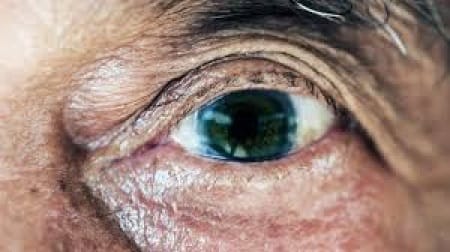Wet macular degeneration, also known as neovascular age-related macular degeneration (AMD), is a chronic eye disorder that affects the central part of the retina, called the macula. This condition can lead to rapid and severe vision loss if left untreated. Understanding the symptoms, causes, and treatment options is crucial for those at risk or already affected by this condition.

What is Wet Macular Degeneration?
The macula is responsible for central vision, which is essential for activities like reading, driving, and recognizing faces. In wet macular degeneration, abnormal blood vessels grow under the retina and macula. These vessels can leak blood and fluid, causing the macula to bulge or lift from its normal position, leading to vision distortion or loss.
Wet AMD is less common than its counterpart, dry AMD, but it progresses more rapidly and is more likely to cause significant vision impairment. It accounts for about 10-15% of all AMD cases but is responsible for the majority of severe vision loss associated with macular degeneration.
Symptoms of Wet Macular Degeneration
The symptoms of wet macular degeneration often develop suddenly and can include:
- Blurred Vision: Straight lines may appear wavy or distorted, and central vision may become blurred.
- Dark or Empty Areas in Vision: This is often noticed when reading or focusing on specific objects.
- Reduced Central Vision: Difficulty in recognizing faces or seeing fine details.
- Changes in Color Perception: Colors may appear less vivid.
If any of these symptoms are observed, it is essential to seek medical attention immediately, as early intervention can help preserve vision.
Causes and Risk Factors
The exact cause of wet macular degeneration is not fully understood, but several risk factors have been identified:
- Age: The risk increases significantly with age, particularly for those over 50.
- Genetics: A family history of macular degeneration increases the likelihood of developing the condition.
- Race: Wet AMD is more common in Caucasians.
- Smoking: Smokers are at a higher risk of developing AMD.
- Cardiovascular Health: High blood pressure, cholesterol, and other cardiovascular conditions may increase the risk.
Understanding these risk factors can help in taking preventative measures, such as lifestyle changes and regular eye check-ups.
Treatment Options for Wet Macular Degeneration
While there is no cure for wet macular degeneration, several treatment options can slow the progression of the disease and help maintain vision.
1. Anti-VEGF Injections
One of the most common treatments involves injections of anti-vascular endothelial growth factor (VEGF) medications directly into the eye. VEGF is a protein that promotes the growth of abnormal blood vessels in the retina. By inhibiting VEGF, these injections can reduce the growth of abnormal vessels, decrease fluid leakage, and in some cases, improve vision.
Common anti-VEGF medications include ranibizumab (Lucentis), aflibercept (Eylea), and bevacizumab (Avastin). These treatments are often administered every 4-6 weeks, with the frequency depending on the severity of the condition and the patient's response to treatment.
2. Photodynamic Therapy
Photodynamic therapy (PDT) is a two-step treatment that involves injecting a light-sensitive drug (verteporfin) into the bloodstream, which then accumulates in the abnormal blood vessels in the eye. A cold laser is then directed at the eye, activating the drug and causing it to destroy the abnormal blood vessels. PDT is less commonly used today but may still be an option for certain cases.
3. Laser Surgery
In some cases, a high-energy laser can be used to destroy abnormal blood vessels. However, this treatment is less common due to the risk of damaging surrounding healthy tissue and the potential for vision loss in the treated area.
Living with Wet Macular Degeneration
Managing wet macular degeneration requires ongoing medical care and lifestyle adjustments. Regular eye exams are essential to monitor the condition and adjust treatment as needed. Additionally, patients can make lifestyle changes to support eye health, such as:
- Eating a Healthy Diet: Rich in leafy greens, fish, and foods high in antioxidants.
- Protecting Eyes from UV Light: Wearing sunglasses that block UV rays.
- Avoiding Smoking: Smoking cessation is crucial for reducing the risk of AMD progression.
- Managing Other Health Conditions: Controlling blood pressure and cholesterol levels can help reduce the risk of worsening AMD.
